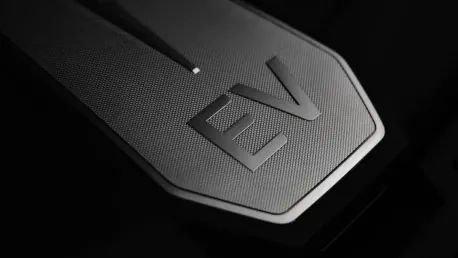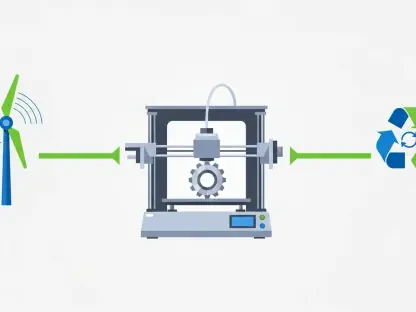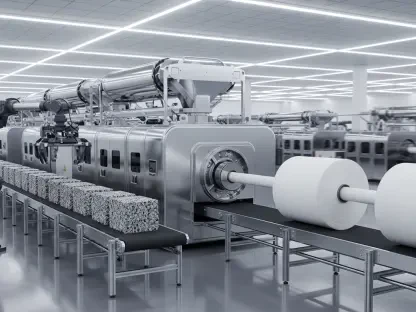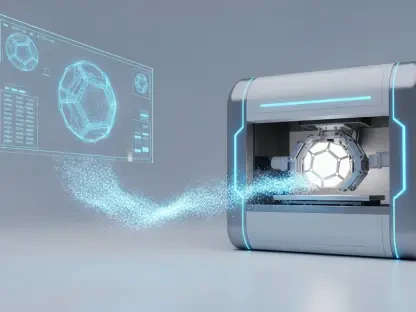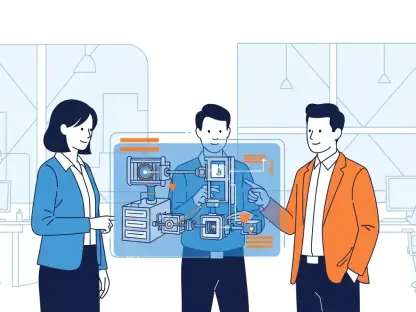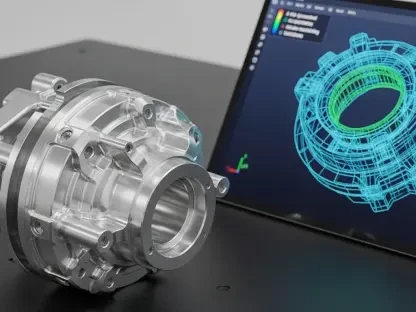How Is Honda’s EV Hub in Ohio Revolutionizing Auto Manufacturing?
Honda’s EV hub in Ohio is revolutionizing auto manufacturing by focusing on the production of electric vehicles and innovative technologies. The facility emphasizes sustainable manufacturing practices and cutting-edge automation, setting new standards in the industry. By investing in advanced research and development, Honda aims to enhance the efficiency and performance of its electric vehicles, positioning itself as a leader in the transition to sustainable transportation. The integration of high-tech solutions in the manufacturing process not only boosts productivity but also reduces environmental impact, marking a significant shift in how automobiles are produced in the United States.
Honda, a company renowned for its high-quality automobiles, has embarked on a revolutionary journey to expand its manufacturing capabilities by establishing the Honda EV Hub. Located in Ohio, this new hub represents a substantial investment of over $1 billion. The transformation focuses on integrating the production of internal combustion engine (ICE) vehicles, hybrid-electric vehicles, and battery electric vehicles (EVs) within the same production facilities. This strategic initiative aims to cater to shifting market demands and customer needs more efficiently.
Honda’s Significant Investment and Flexible Manufacturing Initiative
Honda’s substantial commitment to bolster its manufacturing capabilities in the U.S. represents a strategic investment in innovation and adaptability. The company aims to enhance production efficiency while also incorporating cutting-edge technologies into its assembly lines. This initiative is expected to not only create new jobs but also set a benchmark for the automotive industry’s future.
Commitment to Innovation and Sustainability
Honda’s extensive investment of more than $1 billion in its Ohio plants signifies a commitment to an innovative manufacturing approach and a sustainable future. The retooling efforts encompass three primary facilities: the Marysville Auto Plant (MAP), the East Liberty Auto Plant (ELP), and the Anna Engine Plant (AEP). This investment aims to create a manufacturing environment that balances high efficiency, quality, and value for the customer. Honda has reimagined its manufacturing operations to be more human-friendly and environmentally responsible, aligning with contemporary expectations.
This extensive investment not only underscores Honda’s drive for innovation but also its resolute focus on sustainability. The company has strategically chosen Ohio, a significant automotive manufacturing region, to establish its state-of-the-art facility capable of simultaneously rolling out ICE, hybrid, and electric vehicles. This flexibility is key to meeting varied customer demands in a rapidly evolving automotive market. Moving forward, the retooling of these plants is expected to enhance operational efficiency and contribute to lower production costs, thereby making EVs more cost-effective for consumers.
Integration of Advanced Processes
Honda’s manufacturing overhaul includes blending state-of-the-art processes with environmentally sustainable practices. The Honda EV Hub will commence production of electric vehicles by late 2025, beginning with the all-new Acura RSX EV model. This will be followed by other models based on the Honda 0 SUV and Honda 0 Saloon prototypes introduced during CES 2025 in Las Vegas. The company has also developed the ASIMO OS, Honda’s original vehicle operating system named after the beloved Honda ASIMO robot. The “Wise” value attribute of the Honda 0 Series models underscores Honda’s commitment to sustainable innovation.
Incorporating advanced processes into their manufacturing setup, Honda is embracing cutting-edge technology to enhance vehicle production efficiency and sustainability. The introduction of ASIMO OS is a testament to Honda’s commitment to pioneering innovation. Named after the widely admired Honda ASIMO robot, this operating system is expected to optimize the functionality of the Honda 0 Series models while ensuring environmental sustainability. By offering advanced features and seamless connectivity, ASIMO OS could set a new industry standard in vehicle operating systems.
Triple Action to Zero: Honda’s Bold Environmental Initiative
Carbon Neutrality
Honda’s goal of net-zero CO2 emissions by 2050 is demonstrated through numerous innovative actions. The installation of high-efficiency melt furnaces at the AEP, targeting reductions in natural gas consumption, is one example. These furnaces are designed to potentially convert to Plasma Arc Melting in the future, further lowering CO2 emissions. Additional sustainability measures include the introduction of new HVAC handlers, efficient lighting, and energy-saving equipment across all plants, contributing significantly to the reduced carbon footprint.
The commitment to achieving carbon neutrality by 2050 is embedded in every facet of Honda’s manufacturing approach. Through the installation of high-efficiency melt furnaces, the company not only curbs natural gas consumption but also paves the way for adopting future technologies like Plasma Arc Melting, which promises further reductions in CO2 emissions. Furthermore, the introduction of innovative HVAC systems, energy-efficient lighting, and machinery reflects Honda’s proactive stance in minimizing its environmental impact. These efforts illustrate that Honda is not just planning for the future but actively taking steps to shape a sustainable automobile manufacturing landscape.
Clean Energy
Honda’s vision to use 100% sustainable and carbon-free energy sources is already in motion. By leveraging long-term virtual power purchase agreements (VPPAs) for renewable wind and solar energy, Honda offsets more than 60% of the electricity used in its North American manufacturing operations. These VPPAs underline Honda’s commitment to clean energy and demonstrate that the company is making tangible strides toward energy sustainability.
Renewable energy sources are critical to Honda’s clean-energy vision, enabling the company to significantly reduce its dependency on fossil fuels. Strengthening these initiatives through long-term VPPAs shows Honda’s long-range planning for a carbon-free future. By tapping into wind and solar energy, Honda not only ensures a cleaner energy supply for its plants but also reinforces its mission to play an active role in combating climate change. This use of carbon-neutral energy sources helps Honda meet its sustainability targets and sets a precedent for the automotive industry to follow.
Resource Circulation
Harnessing 100% sustainable materials is also a critical aspect of Honda’s strategy. This involves reprocessing finished products back into raw materials for reuse in new products. The Honda EV Hub epitomizes this approach, with recycling initiatives such as the in-house melting and reuse of aluminum scrap at AEP for battery cases and engines. Additionally, innovative practices like transforming associate uniforms into sound-absorbing materials for vehicles further illustrate Honda’s commitment to sustainability.
Honda’s zero-waste philosophy is evident in its ambitious resource circulation plans. By converting production waste into reusable materials, the company maximizes resource efficiency and minimizes environmental impact. For instance, aluminum scrap reprocessing at AEP dramatically cuts down material waste, while unique innovations like repurposing uniforms underscore Honda’s vigorous commitment to recycling. These initiatives point to a future where manufacturing plants operate as closed-loop systems, aligning with Honda’s broader vision of environmental stewardship. Demonstrably, Honda is setting a new benchmark in sustainable manufacturing practices, ensuring that resource efficiency is as important as product quality.
Innovative Transformations at Honda’s Production Plants
Marysville Auto Plant (MAP)
MAP, Honda’s pioneering auto production plant in America, has undergone extensive modifications to support flexible manufacturing. These changes include:
Consolidation of Production Lines
MAP consolidated its two production lines into one, facilitating the production of EVs, hybrids, and ICE vehicles on the same line. This consolidation facilitates streamlining the assembly process while maintaining the flexibility to shift between different types of vehicles as market demands fluctuate. By leveraging single-line production, Honda can optimize space and resources, leading to more efficient production cycles. It also reduces the need for extensive retooling each time the plant switches between vehicle types, minimizing downtime and maximizing output.
The consolidation of production lines at the Marysville Auto Plant is not purely about efficiency; it is also a strategic move to future-proof the facility. By enabling the production of ICE, hybrid, and electric vehicles on the same line, Honda ensures that it can quickly adapt to market trends and consumer preferences without extensive overhauls. This adaptation capability is crucial in an industry marked by rapid technological advancements and shifting regulations. Therefore, Honda’s line consolidation signifies a shift toward more agile, resilient manufacturing processes capable of swiftly responding to evolving market demands.
Reconfigured Welding Operations
A comprehensive retooling of weld lines at MAP introduced new welding robots and technologies. This setup allows for the production of EV bodies on the same line as ICE models while enhancing the quality of all vehicles. Key changes include securing the EV battery case within the vehicle floor and the introduction of advanced CDC welding technology for all vehicle types, enhancing collision safety and electrical efficiency. By integrating cutting-edge welding technologies, Honda aims to not only meet but exceed industry safety standards, fortifying the structural integrity of its vehicles.
The reconfiguration of welding operations at MAP is a testament to Honda’s dedication to quality and safety. By enhancing welding precision through advanced robots and CDC technology, Honda can ensure that each vehicle—whether ICE, hybrid, or EV—meets stringent safety and performance criteria. Advanced welding technologies like CDC allow for the secure placement of vital components such as EV battery cases, which are critical for both vehicle safety and efficiency. This retooling signifies Honda’s focus on building robust vehicles capable of withstanding collisions while maintaining peak electrical performance.
EV Battery Pack Assembly and Installation
Creating a new workspace dedicated to assembling battery packs for EVs and establishing a dedicated area on the production line for the installation of battery packs reflects Honda’s forward-thinking approach to EV integration. This new setup ensures that the assembly process is streamlined and efficient, paving the way for high-volume EV production in the future. By placing EV battery assembly and installation at the heart of its production process, Honda underscores the importance it places on the electric vehicle market.
The new workspace for EV battery pack assembly and installation is designed for optimal efficiency and integration into the broader production line. This dedicated area ensures that battery packs are assembled and installed seamlessly, minimizing disruptions and enhancing the overall production flow. The streamlined assembly process not only accelerates production times but also improves the quality and reliability of the final product. This focus on EV integration ensures Honda remains competitive in a market increasingly leaning towards electric solutions.
Anna Engine Plant (AEP)
AEP is crucial to Honda’s new EV ambitions, with significant expansion in megacasting of EV battery cases. Changes include:
High-Pressure Die Casting
Installation of six 6,000-ton high-pressure die cast machines for megacasting EV battery case parts, enabling the production of robust battery cases in various sizes. Implementation of high-efficiency natural gas melt furnaces to further reduce CO2 emissions. These advancements symbolize a commitment to employing cutting-edge technology while adhering to stringent environmental standards. The high-pressure die-casting process produces stronger and more reliable battery cases, which are essential components for the performance and safety of electric vehicles.
By investing in high-pressure die-casting technology, Honda ensures that the Anna Engine Plant remains at the forefront of EV battery case production. This method allows for the creation of durable, high-quality cases that can accommodate various battery sizes, providing flexibility as the market evolves. The installation of efficient natural gas melt furnaces further demonstrates Honda’s dedication to sustainability, as these furnaces help to significantly cut CO2 emissions. These advancements at AEP highlight Honda’s dual focus on innovative manufacturing techniques and environmental responsibility.
Friction Stir Welding (FSW)
Adoption of FSW technology enhances energy efficiency and reduces environmental impacts while producing high-strength welds. This technique is critical for the production of EV components, ensuring strong, reliable connections with minimal energy consumption. The use of FSW at the Anna Engine Plant further underlines Honda’s commitment to energy-efficient, environmentally friendly manufacturing processes.
Friction Stir Welding offers multiple benefits, including enhanced energy efficiency and reduced environmental impact. This technique is particularly effective for creating high-strength welds needed in EV components, where reliability and durability are paramount. By adopting FSW, Honda demonstrates a commitment to pushing the boundaries of industrial engineering while maintaining an environmentally responsible stance. This advanced welding method is set to play a crucial role in the production of high-quality, energy-efficient electric vehicles, supporting Honda’s broader sustainability goals.
Advanced Photogrammetry Techniques
Utilization of photogrammetry machines to visually analyze battery cases ensures top-notch quality. Photogrammetry enables precise measurements and detailed visual inspections, ensuring that each battery case meets Honda’s stringent quality standards. This technology is crucial for maintaining the high quality and safety levels expected of Honda EVs, providing an extra layer of assurance for consumers and stakeholders alike.
Advanced photogrammetry techniques are a testament to Honda’s relentless pursuit of quality. By employing state-of-the-art visual analysis tools, Honda can meticulously inspect and verify the dimensions and integrity of each battery case, ensuring that they meet the highest standards. This commitment to quality control is essential in delivering safe, reliable electric vehicles to the market. Through the adoption of such cutting-edge technologies, Honda further solidifies its reputation for producing vehicles that consumers can trust.
East Liberty Auto Plant (ELP)
ELP also undertakes vital enhancements to accommodate EV production. Key modifications include:
Expanded Paint Department
The new paint department features reinforced carriers for heavier EV bodies and expanded E-coat facilities for improved paint quality. The new facilities are designed to handle the increased weight and unique requirements of EV bodies, ensuring a superior finish while maintaining production efficiency. By investing in the paint department at ELP, Honda is enhancing the overall quality and aesthetic appeal of its electric vehicles, which are critical factors in consumer decision-making.
Expanding the paint department to accommodate EV production involves reinforcing carriers capable of managing the additional weight of EV bodies. This upgrade ensures that the paint application process remains efficient and consistent, resulting in high-quality finishes for Honda’s electric vehicles. The expanded E-coat facilities also provide better corrosion resistance, essential for the longevity of vehicle bodies. These enhancements not only improve the durability and appearance of Honda’s electric vehicles but also demonstrate the company’s commitment to maintaining high standards in all aspects of production.
New Vehicle Quality Department
ELP’s enhancements include the construction of a new Vehicle Quality Department (VQD) building to house an expanded team dedicated to rigorous quality checks. The new VQD building is equipped with advanced technologies and equipment to thoroughly inspect and test every vehicle produced at the plant. This focus on quality assurance ensures that all EVs, hybrids, and ICE vehicles exiting the production line meet Honda’s stringent quality and safety standards.
The establishment of a dedicated VQD building at ELP underscores Honda’s commitment to delivering top-notch vehicles to its consumers. Advanced testing and inspection equipment in the VQD building enable a comprehensive assessment of each vehicle, ensuring that it meets the highest standards of performance and safety. This meticulous approach to quality assurance is essential for maintaining consumer trust and satisfaction, particularly as Honda expands its EV offerings. By prioritizing quality at every stage of production, Honda reaffirms its reputation for reliability and excellence in the automotive industry.
Enhanced Assembly Department Infrastructure
Strengthening of assembly components to manage heavier EV models and increased production flexibility is another key enhancement. The reinforced assembly station infrastructure at ELP can better support the assembly process of EVs while maintaining efficiency for ICE and hybrid vehicles. By ensuring that the assembly process can handle the unique demands of EVs, Honda is poised to scale up production in response to market needs.
Enhanced assembly department infrastructure is crucial to accommodating the specific requirements of electric vehicles. This includes reinforcing key components and modifying assembly stations to manage the increased weight and dimensions of EVs. These upgrades not only streamline the assembly process but also ensure that it remains efficient and effective across different vehicle types. This flexibility is vital for Honda as it prepares to scale up EV production and meet the growing demand for electric mobility solutions.
Battery Pack Mount Mezzanine
Creation of a mezzanine area for efficient EV battery installation within the production flow is another significant enhancement at ELP. The mezzanine ensures that the battery packs are assembled and installed seamlessly into the vehicles, optimizing the production process and reducing bottlenecks. This modification plays a critical role in streamlining EV production, contributing to faster production times and higher throughput.
By incorporating a dedicated mezzanine for EV battery installation, Honda is optimizing the production flow and minimizing potential disruptions. This dedicated space allows for the integration of battery packs in a streamlined manner, ensuring that the process is both efficient and effective. The mezzanine area is a testament to Honda’s thoughtful and strategic approach to EV manufacturing, designed to boost production capacity while maintaining high standards of quality and efficiency.
Honda’s Legacy and Future Prospects
Honda has long been a leader in automotive manufacturing, known for its innovative engineering and reliable vehicles. As the company looks to the future, it continues to invest in new technologies and sustainable practices to maintain its competitive edge in the industry.
Honda, a company renowned for its high-quality automobiles, is embarking on a groundbreaking venture to broaden its manufacturing capabilities with the establishment of the Honda EV Hub. Strategically located in Ohio, this new hub represents a significant investment of over $1 billion. The primary objective of this hub is to transform and integrate the production of internal combustion engine (ICE) vehicles, hybrid-electric vehicles, and battery electric vehicles (EVs) within the same state-of-the-art production facilities.
This innovative initiative by Honda is designed to respond more effectively to the changing market demands and customer preferences. With a growing shift towards more sustainable and eco-friendly transportation options, the integration of different types of vehicle production under one roof enables Honda to be more adaptable and efficient. This move will also likely enhance the company’s competitiveness in the global automotive market, allowing it to offer a diverse range of high-quality vehicles to meet varying consumer needs.
In summary, the Honda EV Hub is not just an investment in infrastructure but also a strategic move towards a future where traditional vehicles and EVs are produced side by side. This integrated approach underscores Honda’s commitment to innovation, sustainability, and meeting the evolving demands of its customers. Such a comprehensive strategy positions the company to better navigate the changing landscape of the automotive industry.
